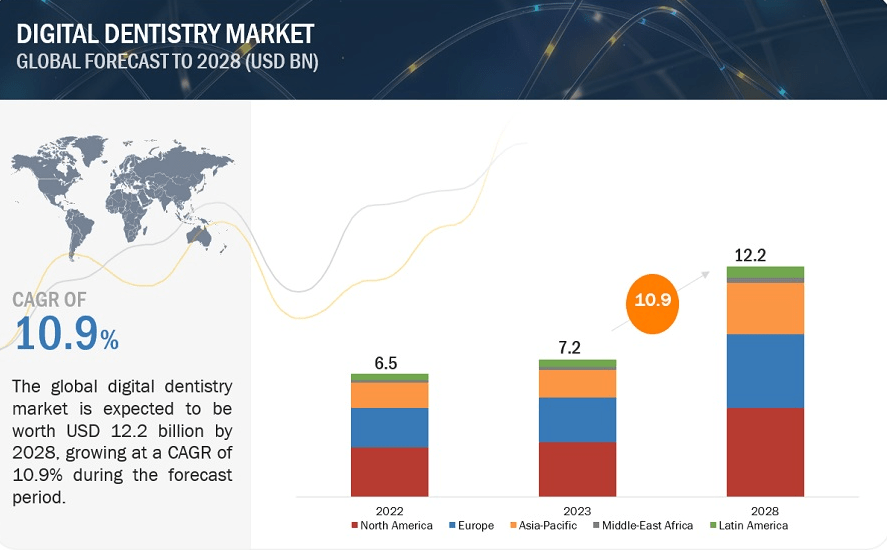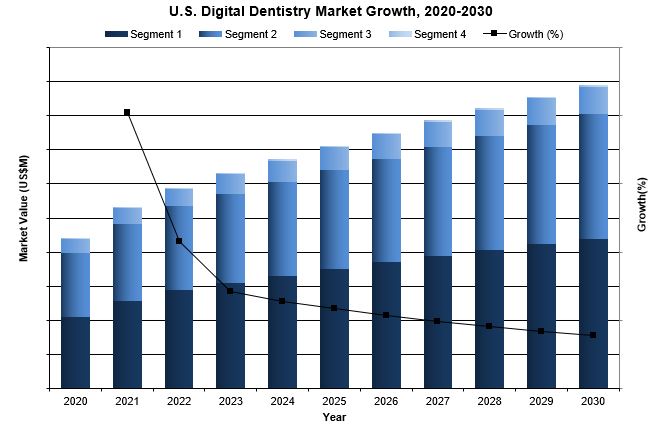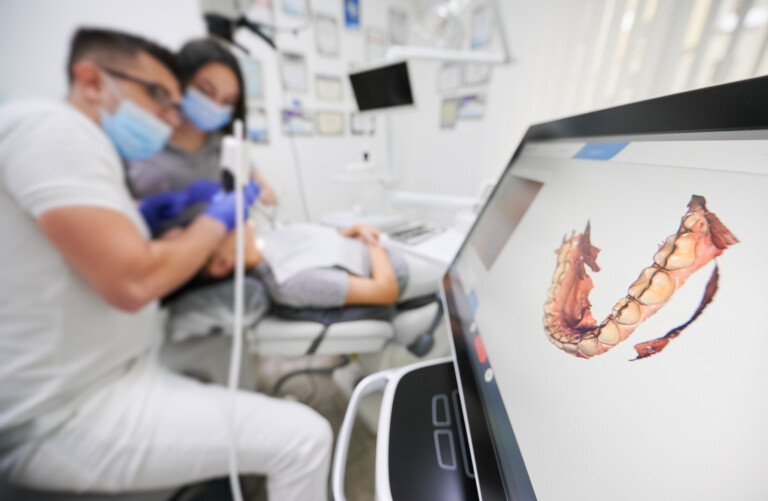We often hear that digital dentistry is the industry’s future. 3D printing, CAD/CAM software, and in-office milling machines are touted as near-necessities for the forward-thinking dentist. In a recent Cureus cross-sectional study, nearly a thousand dental professionals from a variety of dentistry-related fields were surveyed. Over 99% reported being aware of digital dentistry and digital technology in dentistry. Additionally, many respondents identified several benefits of digital dentistry, from fewer appointments and less chairside time to greater precision.
However, there are still dentists holding out, letting others test the water before they make the initial investments in upgrading their offerings. Recent research affirms the importance of digital dentistry: in the next ten years, digital dentistry will account for a major share of industry profit growth.
Digital Dentistry by the Numbers
A December 12, 2023 study from DataHorizzon Research reported that the Digital Dentistry Market, valued at $7.3 billion in 2022, is projected to grow steadily at 9.7% annually, reaching an estimated worth of $18.3 billion by 2032.
Markets and Markets affirms the general trend of this research; their studies pin the global market value of digital dentistry in 2022 at $7.2 billion. They project that, by 2028, the digital dentistry market will grow to $12.2 billion, driven by an increasing demand for same-day dentistry services.

An Overview of the Digital Dentistry Industry
Digital dentistry uses advanced technologies like artificial intelligence (AI), 3D printing, and computer software to streamline dental treatments, replacing traditional methods. This encompasses everything from diagnosis to treatment and generating electronic prescriptions. Modern medical technologies such as AI, virtual reality, 3D printers, and remote patient monitoring have been increasingly integrated into various medical fields, including dentistry. This integration has boosted the adoption of digital dentistry.
The dental industry has embraced these modern techniques, simplifying diagnosis and treatment procedures. These tools have reduced wait times and treatment durations, making them more favorable among patients. Digital X-rays, preferred for their accuracy and reliability, have replaced traditional radiographs.
The global digital dentistry market is divided based on technology, application, end-users, and region. One popular choice within this market is the Intraoral Scanner, known for its precise tooth impressions, speed, accuracy, and safety due to its lack of harmful radiation. This method of dentistry is an accurate means of diagnosing oral health issues. Intraoral and face scanners assist dentists in comprehending problems better, resulting in more accurate treatment plans while saving time, money, and effort.
Demand for Digital Dentistry
The demand for dental services has increased due to their effectiveness, convenience, and precision in diagnosing and treating dental problems. This shift has allowed patients to receive treatment at home, reducing visits to dental clinics significantly. North America, particularly the United States, holds a significant share in the digital dentistry market due to the high demand for better oral care services, especially among the growing senior population.
Recent industry highlights include 3M‘s announcement of Solventum as its independent healthcare spin-off and Align Technology appointing Mojdeh Poul and Kevin Conroy to its board of directors.

A Coming Boom
The predicted financial boom in digital dentistry has several significant implications for the dental industry. First off, the integration of advanced technologies like AI and 3D printing revolutionizes how dentists diagnose and treat oral health issues. With digital tools providing more accurate and faster results, patients benefit from reduced treatment times and increased precision in their dental care. This not only enhances patient satisfaction but also allows dentists to streamline their workflow, offering more efficient services.
When you boil it down, more efficient services amount to time saved, and time saved is money saved. As processes and procedures in dental practices become more efficient–requiring less overwork, rework, or outsourced work–dentists are free to take on more, treat more clients, and expand their personal offerings. This can lead to increased profits, or a less harried schedule for dentists; ideally, it will lead to both!
A Wave of Innovation and Accessibility
Moreover, the shift towards digital dentistry has sparked a wave of innovation in treatment approaches. Procedures that once required multiple visits or intricate processes can now often be completed in a single session. For instance, the use of intraoral scanners for precise impressions expedites the creation of dental prosthetics like crowns or bridges, significantly reducing the time patients spend in the dental chair. This transformation in treatment methods not only enhances convenience for patients but also contributes to a more productive practice for dental professionals.
Additionally, the accessibility of digital dentistry has begun extending beyond traditional clinic settings. Tele-dentistry, enabled by these technological advancements, allows patients to seek consultations and even receive certain treatments remotely. Especially for individuals residing in remote areas or those with limited mobility, this accessibility proves invaluable. It bridges the gap in accessing quality dental care, promoting better oral health outcomes for a broader spectrum of individuals. As technology continues to advance, the potential for remote dental care to become more comprehensive and widely available continues to grow, promising a more inclusive approach to oral healthcare.
To learn more about 3D printer technology and how to incorporate digital dentistry into your practice’s workflow, visit Benco’s website or contact one of their knowledgeable reps today for more information.



 Keegan Bradford
Keegan Bradford PREVIOUS POST
PREVIOUS POST

